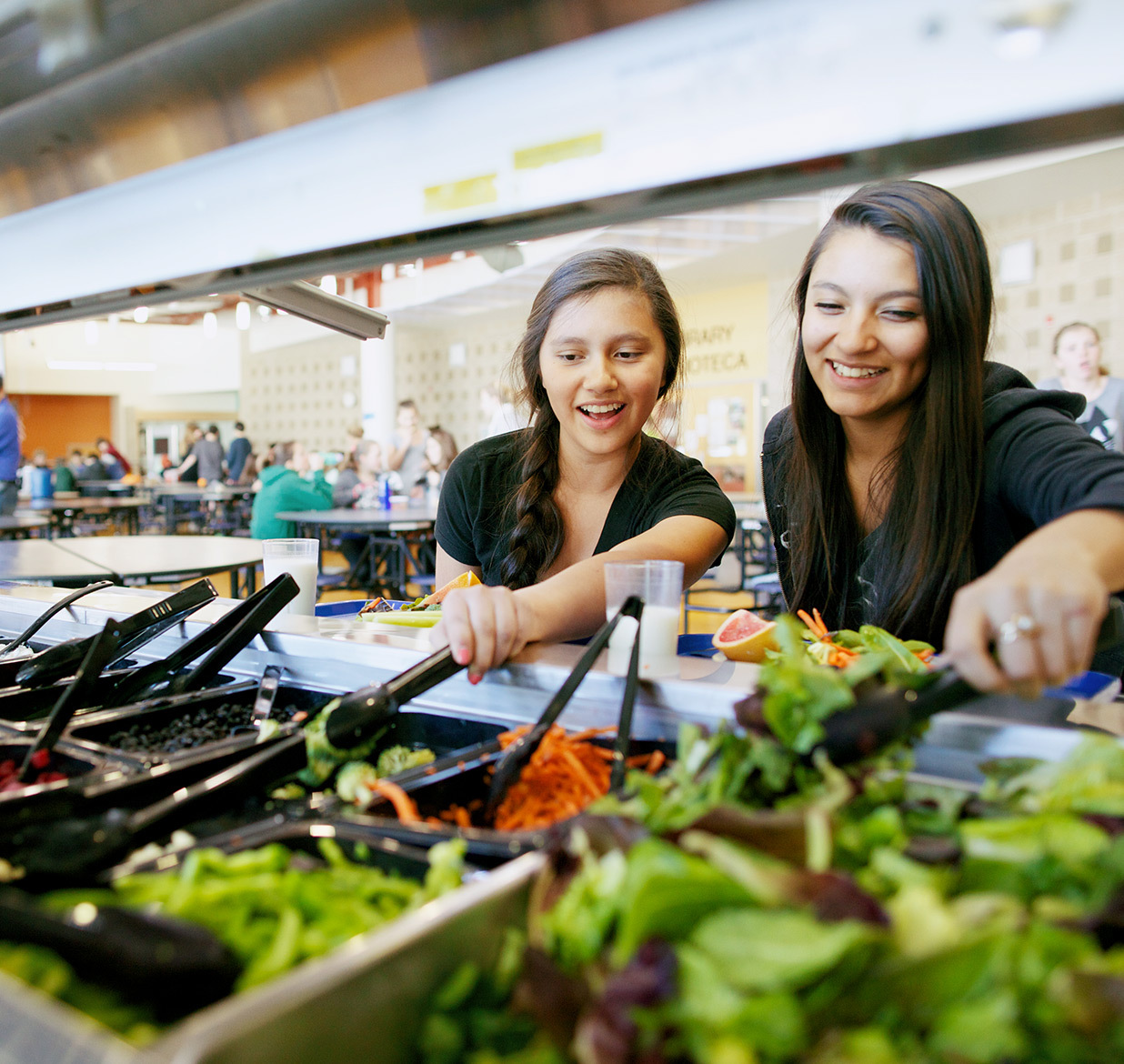
Salad Bar Recipes
We test all recipes on The Lunch Box in school kitchens and lunchrooms. Students have tasted and approved these recipes, so you can feel confident serving them in your schools.
Scroll down to see the Salad Bar recipes in addition to recipes already on The Lunch Box. We’ve divided them into salad bar components, including instructions for prepping items for your salad bar, making salad dressings in-house, and creating pre-made salads. You can use the recipes individually or together in menu cycles that have already been built out.

Salad Bar Recipes
We test all recipes on The Lunch Box in school kitchens and lunchrooms. Students have tasted and approved these recipes, so you can feel confident serving them in your schools.
Scroll down to see the Salad Bar recipes in addition to recipes already on The Lunch Box. We’ve divided them into salad bar components, including instructions for prepping items for your salad bar, making salad dressings in-house, and creating pre-made salads. You can use the recipes individually or together in menu cycles that have already been built out.
Vegetable Components

Dark Green Subgroup
- Broccoli, florets
- Collard greens
- Green peppers, strips
- Spinach
- Swiss chard

Red & Orange Subgroup
- Butternut squash
- Carrots, shredded
- Red peppers, strips
- Salsa
- Spaghetti squash

Beans & Peas (Legumes) Subgroup
- Black-eyed peas
- Edamame
- Garbanzo beans
- Lentils
- Peas

Starchy
- Corn
- Hominy
- Jicama, prepped
- Lima beans
- Water chestnuts

Other

Fruits
Fruits on the salad bar can introduce new flavors, support local procurement, and be tasty additions to any salad. Make sure to consider the grade level for fruit preparation. For example, Pre-K to 5th grade students prefer the ease and accessibility of chopped apples or peaches. Middle and high school students are more than happy to grab these items whole.
Our favorite fruit options for the salad bar include: apples, bananas, melons, oranges, and pears.

Fruits
Fruits on the salad bar can introduce new flavors, support local procurement, and be tasty additions to any salad. Make sure to consider the grade level for fruit preparation. For example, Pre-K to 5th grade students prefer the ease and accessibility of chopped apples or peaches. Middle and high school students are more than happy to grab these items whole.
Our favorite fruit options for the salad bar include: apples, bananas, melons, oranges, and pears.
Salad Bar Proteins
Add to your salad bar offerings by featuring different proteins on the line. Options include diced turkey, chopped hard boiled eggs, hummus or sweet potato hummus, and more!
Composed Salads
Prepare composed salads to add to your salad bar. By planning and creating the salads in advance, you can cater to the tastes of students and make crediting the salad easier.
Click on the links below to go to the composed salad recipe page.


Composed Salads
Prepare composed salads to add to your salad bar. By planning and creating the salads in advance, you can cater to the tastes of students and make crediting the salad easier.
Click on the links below to go to the composed salad recipe page.
Dressings
Though often overlooked as procurement decisions, condiments and dressings can help a school meal program reach their ingredient goals and vision. Making dressings in-house can help school districts decrease the added sugars, fats, and preservatives in their food.
How to Use Our Recipes
- Each recipe has been analyzed for the USDA meal components; information can be found on the “Food Groups/Meal Patterns” tab.
- From each recipe page you can scale the recipe, save it as either a pdf or an Excel file to your computer, and view and save the nutrient analysis and the costing. The costing is an estimate based on Boulder Valley School District’s procurement since they developed the recipes. Recipe costs will vary from district to district.
- To scale the recipe, change the “Standard Yield” number and click the “Scale” button. To return to the default standard batch size, click the “Reset” button.
- Ingredient yield factors, where applicable, can be found at the top of the Recipe Instructions tab in “Pre-Preparation Instruction” fields.
- The recipes default to tested batch sizes. Although they are regularly used for meal counts in excess of 2,000, we recommend scaling batch sizes to be compatible with your equipment. Since seasonings are particularly affected by increased scaling, we suggest taste testing as you increase quantities.
Recommended Topic: Salad Bar Assessment & Planning
Once a school district establishes the goal of incorporating salad bars into their school lunch program, it is important to perform an assessment and plan for each school’s assets and challenges for implementation.
Recommended Topic: Salad Bar Assessment & Planning
Once a school district establishes the goal of incorporating salad bars into their school lunch program, it is important to perform an assessment and plan for each school’s assets and challenges for implementation.







